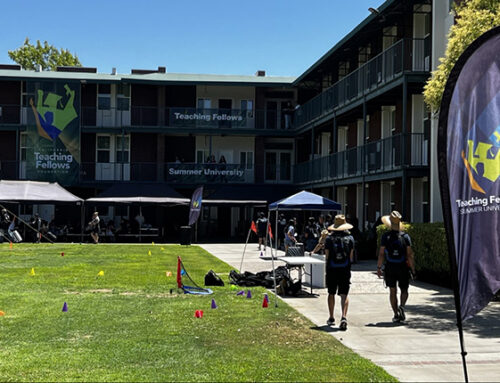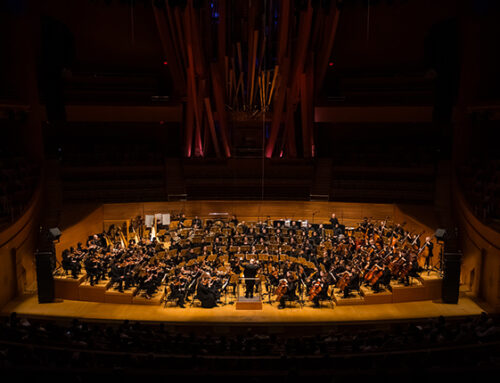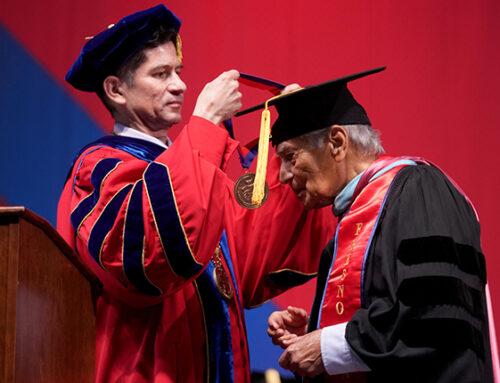“Sky clear! … Range clear!” A brief countdown follows, then — hopefully — the rocket soars off the launch rail, whistling hundreds or thousands of feet into the sky, depending on the power of its motor.
Spectators shield their eyes, looking skyward until the rocket’s parachute becomes visible and the apparatus begins its return to Earth. The young rocketeers erupt in cheers when they spot the device and its attached parachute. Then, the hunt is on to retrieve the equipment from wherever it lands. The process repeats throughout the day with each new launch.
Members of Fresno State’s American Institute of Aeronautics and Astronautics club took a road trip right before Thanksgiving to the Mojave Desert near Edwards Air Force Base to test rockets they had spent months planning and building, both individually and as a team. They use a launch site maintained by the Tripoli Rocketry Association, a nonprofit organization dedicated to the safe operation of amateur, high-powered rocketry.
It was a big day for Philip Dayuday, a mechanical engineering major who recently graduated from Fresno State, and the rest of the team.
In addition to several individual rocket launches planned, the broader team is there to test a prototype of a rocket they plan to enter in the NASA Student Launch Challenge in Huntsville, Alabama, at the end of April. The prototype they are testing on this day was about 5 feet tall, but the one they will take to Alabama will be closer to 9 feet tall.
Members converged at the launch site between 7 and 8 a.m., starting their journey hours earlier, long before sunrise. At the site, small storage bins, equipment and tools cover several folding tables pushed together to create one long workspace — spare rocket parts, extension cords, wires and electrical tape, as well as cups of coffee and instant noodles.
Last-minute preparations ensue as students prepare to launch nine rockets that day, including the big one — the competition prototype. Motors and parachutes must be assembled on-site so the Tripoli site supervisor can inspect them before launch. The Tripoli inspector’s dark Chevy truck bears an appropriate personalized license plate — ”ROKET MN”.
There are three levels of certification to launch high-power rockets: Level 1 is the lowest, and Level 3 is the highest. The levels vary based on the power of the rocket’s motor. Rocketeers move up to higher levels by passing an exam and successfully launching and retrieving a rocket in flyable condition before a site supervisor.
Due to the power of the prototype rocket’s motor, all Fresno State prototype launch team members must have a Level 2 certification to participate in the launch, which is scheduled for the end of the day. Some team members take the exam on-site, administered by the Tripoli inspector. Candidates must score 90% or higher on the 50-question written test to obtain certification.
Dark clouds far to the north indicate rain that day in the Fresno area. But the only notable weather in the sunny high desert is chilly temperatures and strong winds, the latter of which can cause headaches when retrieving expensive equipment. Nearly a dozen vehicles provide some wind break to the work area. None of the nearby vegetation — low shrubs of rubber rabbitbrush, creosote bush and dove weed — provides any cover from the elements.
The winds are definitely a factor on this day, pushing rocket retrievals farther out after launch than is typical. Recovering the first Fresno State launch isn’t easy, and several students jump in a pickup to search for it.
Another challenge causes delays between launches. Once one rocket launches and is retrieved, a scramble ensues to swap out some parts to complete the assembly of another rocket on deck, sharing resources between team members.
“That’s 100% a budget constraint,” Dayuday said later. “Ideally, everybody would have their own parachutes and electronics. That way, launches would be smooth and consecutive. But with our limited budget, we can only buy one or two of the electronics or parachutes, so we have to wait for those to land, recover them and then use them for other rockets.”
Besides sending rockets into the sky, the club also helps participating students launch themselves toward greater things professionally.
The American Institute of Aeronautics and Astronautics is a national professional organization dedicated to advancing aerospace science and engineering. Since Fresno State doesn’t currently offer an aerospace engineering degree, the campus chapter — the largest engineering-focused club at Fresno State — gives students a chance to get hands-on experience before entering the field.
“This is the only foot in the door for Fresno State engineering students to the aerospace industry,” Dayuday said. “This is the only practical experience we get. In class, we get theories and math, but here, we actually get to build something, and fly it and test the theories we are learning about. There’s no better way to see if it works than by doing it.”
That is changing though. Beginning in the fall 2025 semester, the Lyles College of Engineering at Fresno State will offer a new aerospace engineering minor, expanding opportunities for students.
The Nov. 23 launch of the prototype team rocket for the NASA competition went well according to the NASA and Tripoli standards that must be met. Despite the windy weather, parts arriving late and one piece of equipment malfunctioning, the launch was successful. It went up, came down safely and was successfully retrieved, with no damaged parts.
“The general standard when you launch a rocket and retrieve it is that it’s flyable again,” Dayuday said. “We were able to get data off of our electronics. So, overall, it went well. There were definitely some things that could have gone better, but it’s a learning experience.”





